My Oideas Gael Review: Learning Irish In The Gaeltacht
 Written byHubert Nagel
Written byHubert Nagel- Read time15 mins
- Comments23
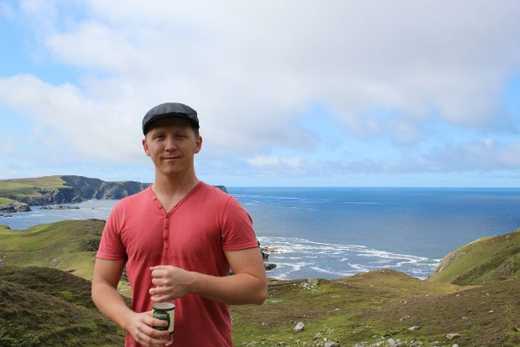
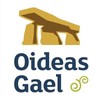
- Caters to all levels of Irish
- Wonderful staff and supportive atmosphere
- Stunning location
- Inexpensive
- Must sort out your own nearby accommodation
- Still difficult to escape English
- Quite a distance from major airports
Oideas Gael is one of, if not the most reputable Irish language immersion courses in Ireland. Its reputation is well-earned, as it caters for all learners at every level of Irish, and does so brilliantly.
It's also very affordable.
NOTE: Make sure to check out the short video I made at the end of this post and let me know what you think. I have plenty more footage with lots of dialogue that I’ll try get round to uploading later.
Also check out my resource page for learning Irish here.
Tá mé ar ais!
After spending 3 intense weeks on the other side of the planet immersed in a language that I’ve been devoting myself to over the last 8 months, I’m back home in Australia.
I said in this post a few weeks back that after spending so much time and energy on learning the Irish language for that length of time (as well as blogging about it and producing progress videos at different stages) it felt like such a depressing anti-climax to not go out with a bang (before I head to Korea and switch my focus to that language for a while).
So after some quick consideration I thought feck it… I’m going to Ireland!
Despite some negative people saying that I was wasting my time and money, I bought a plane ticket with less than a week’s notice, reserved a place on the last week of an Irish language course in the Gaeltacht (see below) and set out determined to turn a very strong passive knowledge of the language into active fluency.
It was not a trip for tourism.
I went there on a language mission to cram as much as humanly possible into a few weeks, embracing a largely neglected part of Irish culture and identity, to make like-minded friends and practice partners, visit a few Gaeltacht areas, and ultimately be able to walk away from the experience able to confidently place Irish (Gaeilge) on my list of known languages.
Tick.
I wanted to be able to honestly tell people that after less than a year of learning the language outside of Ireland I speak and use it and the only way I could do this was to spend time in a place where I could first prove it to myself – even though it meant over 60 hours in total of commuting time!
The whole experience far exceeded my expectations.
I got more out of this trip then I had hoped – both in terms of bringing my Irish up to a level I’m very satisfied with and also the wonderful new friendships I left with.
I wouldn’t hesitate for a second to spend the time and money to do it all again!
The Irish language course at Oideas Gael in Gleann Cholm Cille, Co. Donegal
Oideas Gael is probably the best known and most reputable program in Ireland for adult learners of Irish (as far as I’m aware at least).
It’s been around now for a few decades running through the summer months and attended by people from all over the world who come for all kinds of reasons to learn the language.
In the two weeks I was there I not only met loads of people from all over Ireland learning the language but also people from the UK, America, Germany, Spain, Denmark, Italy, Russia, Bulgaria and even Japan. It blew my mind to see so much interest in the Irish language in some of the most unlikely parts of the world.
The two most common reasons that people from abroad told me as to why they were learning Irish (apart from those with ancestry) were that they were either linguistics students (with a focus on Celtic studies) or they simply had a fascination for Irish music and culture.
One of the new friends I made on the course from Moscow travels to the school each year and has a really impressive level of fluency. I had heard about Irish speakers in Russia before watching an episode of 'O Tholg Go Tolg (season 1) where a couple of Irish girls found a thriving Irish-speaking group in Moscow.
There was another young woman on the course from Japan who was a brilliant fiddle player and a German guy who played the Irish harp (cláirseach) beautifully as well.
There was a really interesting mix of people learning Irish at Oideas Gael.
For those who haven’t read it, I outlined my own reasons for learning Irish here back in December 2011.
Ulster Irish
As I said previously, I was set on learning the Munster dialect but due to my last minute timing I had no other options but to choose a course where Ulster Irish is the main focus.
I’m glad it turned out this way.
The dialects are pretty much mutually understandable anyway (the difference is primarily in accent rather than vocabulary) so it wasn’t a major concern for me to begin with. The Donegal accent takes a bit of getting used to (even in English!) but I’m glad I had that exposure.
After being in Donegal around native speakers from Gaoth Dobhair I can now relate to this guy completely (it’s actually funnier watching this now having been there myself):
A popular example of the differences that comes up a lot is I’ll see you, which is feicfidh mé thú (pronounced feckig may hu) in most parts, but in Ulster is chífidh mé thú (pronounced cheefee may hu).
Also where you have -amh verb endings that are pronounced in Connemara like -uv, people in Donegal pronounce it without the v sound like-u.
Maith, which is simply the word for good is pronounced may in Ulster Irish (with a distinctive y sound at the end) whereas down south it sounds more like maa.
There were loads of Ulster-specific terms and expressions explained to us during the week and I can’t tell you how many times myself and others said “but I heard it this way” to which the teacher would reply, “aye that’s just a wee dialect thing”.
From what I’ve heard, the concern by students over the dialect differences is quite common but the director, Liam 'O Cuinneagáin, is adamant that it’s not something people should worry about. I did find this to be sound advice after going from Donegal to Galway and finding that everything I learned on the course was helpful to me there as well after making some minor listening adjustments.
This is quite different from my experience with Arabic where being fluent in one dialect can still leave you clueless when confronted by another.
This is what took place during my time at Oideas Gael
Well actually it was more like a week and four days.
I arrived into Gleann Cholm Cille at the beginning of the week before my course started (while another course was on) so that I could rest off my jet-lag, hike around the area and get some early practice.
As well as taking advantage of the incredible weather we had to get some nice camera action (as you can see in the video) I got to attend some early classes and drink with some lovely people, including the current Minister for Tourism, Leo Varadkar, who was also brushing up on his Irish.
During the week we attended a traditional céili dance in one of the evenings which was loads of fun (even though I’m biologically incapable of dancing :)).
It’s very similar to the traditional Aussie bush dances that we learned in school so the early Irish settlers must have been doing céili dances here back in the day! Sadly it’s the only thing that I didn’t get any video of because I was enjoying myself too much to bother recording it
The classes basically run from Monday to Friday with an introductory lesson on the Sunday afternoon where people are placed in their respective levels.
For a detailed explanation of the time schedule see this handy post written by Audrey Nickel at the Bitesize Irish Gaelic blog.
Each week the levels vary – some weeks they’ll have 4 levels and others they might have 5 or even 7 (the highest being the most difficult) depending on the number of students and so on. In addition to this, they also have a class called Saibhreas Na Gaeilge or The Richness of Irish for fluent speakers who want to focus on the finer details and cultural aspects of the language.
For my week we only had 4 levels (being the last week there weren’t as many students) and although I was placed in level 3, I decided that level 2 would be more appropriate given my need to get spoken practice at a slightly lower level first.
This was a difficult choice because in terms of comprehension, level 2 was at times frustratingly easy but because I’d spent the last 8 months with very little conversation practice I wanted to properly cement some of the earlier content.
As I said in my previous post, even though you may be at a high level in relation to your comprehension (which in my opinion is the toughest language hurdle to beat) it really can mean jack shit when you’re face to face with other speakers for the first time if you’ve spent a lot of time learning solo.
Our teacher for the week, Andrew, was fantastic and very knowledgable about the language (especially the small nuances of Ulster Irish). Even though it was a level 2 class we ended up covering advanced level stuff toward the end of the week including the one aspect of the Irish language that causes Irish school children to have nightmares – the modh coinníollach (the conditional mood).
If grammar study is part of your approach to language learning then things like the modh coinníollach will cause you to fear the language but I firmly believe that you don’t need to study grammar to learn to speak another language so this terrifying feature of Irish doesn’t bother me at all.
The teacher did a brilliant job at simplifying it too and many other points without going into unnecessarily complicated explanations.
A bit too much Béarla (English language)
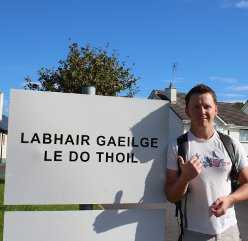
One of the things I said would be happening once I got there was that I’d be limiting my use of English for the duration of the course.
Unfortunately this wasn’t as simple at as it could have been.
Now, this is something that the students themselves are first and foremost responsible for as it’s up to every individual to make a real effort to speak the target language, especially considering the fact that we’re all bilingual, fluent English speakers.
It’s so easy to revert to English when you know the people you’re talking to are perfectly fluent in your mother tongue.
Like a lot of English schools I’ve been to and taught at in various parts of the world, there were students at Oideas Gael who did the right thing and persisted in trying to only speak the target language and then there were others who were either too shy or not serious enough about the course.
The constant atmosphere of lots of students speaking English makes it more difficult to only speak Irish so as the week progressed I was making an effort to spend more free time with the students who were actually limiting their English. This made a massive difference to my progress.
Hat tip to Ken Kerr for being such an awesome person to chat with
Plenty of practice in An Spidéal (Spiddal) and An Cheathrú Rua (Carraroe)
I had planned to head up to Gaoth Dobhair (another part of Donegal) immediately after the course to get in some real practice but I had a last minute change of plans and went down to An Spidéal (Spiddal) and An Cheathrú Rua (Carraroe) instead, just outside of Galway city.
The B&B that I stayed in was brilliant because the bean an tí (woman of the house) only spoke Irish to me.
We had some lengthy chats in Irish and she hardly ever switched into English or lost patience with me when I struggled to explain something.
For those of you considering heading to An Spidéal to practice your Irish, I highly recommend the Ard Aiobhinn B&B.
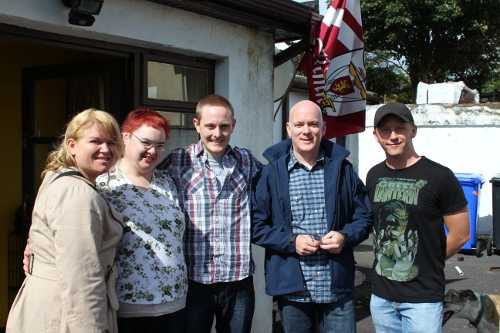
Being there was the perfect opportunity to get in some time with a different dialect (Connemara), check out the set of Ros na Rún (a TV series in Irish) and meet up with the founder of Bitesize Irish Gaelic which I reviewed here.
We also ended up having lunch with a lady who I had connected with previously through Forvo (coincidentally!) and I got to meet a few Canadian Irish speakers from the Irish Language Forum who informed that there’s actually a Gaeltacht near Toronto!
One more reason to visit Canada
Being interviewed by journalists and hanging out in Conradh na Gaeilge
I spent my last 3 days in Ireland hanging out in Baile 'Atha Cliath (Dublin) with friends who I met on the course in Gleann Cholm Cille and also met up with some journalists who were interested in my experience with (and method for learning) the Irish language.
It was great to share what I’ve learned and made me think how great it would be if even a handful of people get inspired to learn Irish after hearing my story.
I definitely need more practice being interviewed in front of a camera though! Hopefully there’ll be more opportunities like this in future.
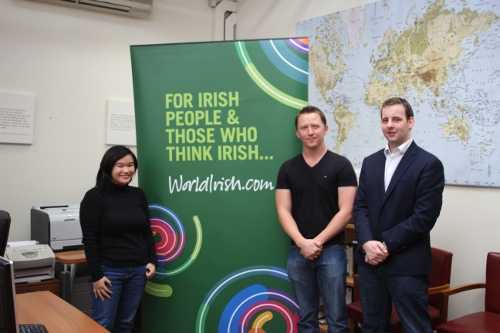
Perhaps the greatest highlight of my trip was getting the chance to hang out with Carrie Crowley, an actress from a TV series that I’d been using as a learning tool for the last 6 months or so (Rásaí na Gaillimhe).
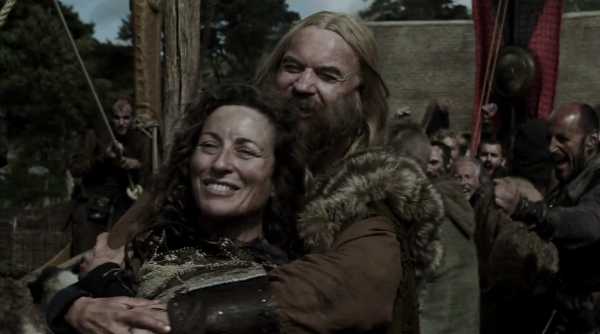
She also hosted Eurovision in 1997 with Ronan Keating and starred in the TV series Vikings.
Like so many other people I met on the course, Carrie’s a lovely person and an excellent person to be around if you want to get challenged to speak Irish (pretty much the entire time we spent together was through Irish). My last night in Ireland was spent at Conradh na Gaeilge with Carrie watching Rónán O’Snodaigh play the bodhrán.
Make sure to check out the video below.
A superior book series for Irish learners
Quite a few people have emailed asking me what resources I find most useful for learning Irish at home.
I’ve mentioned quite a few already in previous posts but I have to tell you about one book and audio series that I’ve just started using which should be a part of every Irish learner’s collection. In fact I wish I knew about it six months ago!
It’s called Gaeilge gan Stró! (Irish Without Stress/Hassle).
Some of the lads at An Siopa Leabhar in Dublin recommended it to me (I got the intermediate one but there’s a beginner one too and apparently an advanced one on its way). It’s fecking brilliant for a few reasons which I’ll explain further in another post.
What I will say now is that it covers all dialects, has really relevant and modern dialogue, and has a beautiful layout compared to other books.
Definitely check it out if you’re looking around for a good resource.
The most important question – was the trip worth it?
Absolutely.
It cost me a fortune and a lot of travel time but as I already said, I’d happily do it again.
I’m going to steal a quote from Audrey Nickel’s blog post as I think it’s brilliant:
“You know you’ve been studying Irish too long when your idea of a dream vacation changes from two weeks at Club Med to two weeks at Oideas Gael.”
This is funny because I decided to go on this trip instead of relaxing on a beach in Thailand or Fiji which is what I would have been doing if not for the course at Oideas Gael.
Those who are passionate about language learning will be able to relate to this I think – time spent learning a language IS relaxing!
For a language like Irish and a country like a Ireland, no sunny beach compares. (maybe I’m just sick of beaches)
As far as my Irish fluency level is concerned, this trip did wonders for me and the people I spoke to kept telling me that there was a very noticeable improvement toward the end of my stay.
I haven’t produced a monologue progress video as I did before because I’m hoping to get some Skype conversation videos instead which I think will give a better indication of how far I’ve come since the start of the year.
Keep checking back for that.
Short video of my language learning mission in Ireland
Anyway, here’s the video that I put together to give you an idea of what I got up to during my stay in Ireland.
I have a ridiculous amount of video footage that I didn’t include here (mainly because of lack of time) including lots of dialogue which I’ll try to upload after I’m settled in Korea.
Let me know what you think of this and please share, like and upvote this post if you found it helpful or interesting.
I hope that for those of you learning a language at home you find some kind of inspiration or motivation from this to head off and spend a few weeks using your target language.
Trips like this may be expensive and a bit of a sacrifice but they’re ultimately life-changing and the friendships you take away are the best part of all by far!
 Grab the link to this article
Grab the link to this article